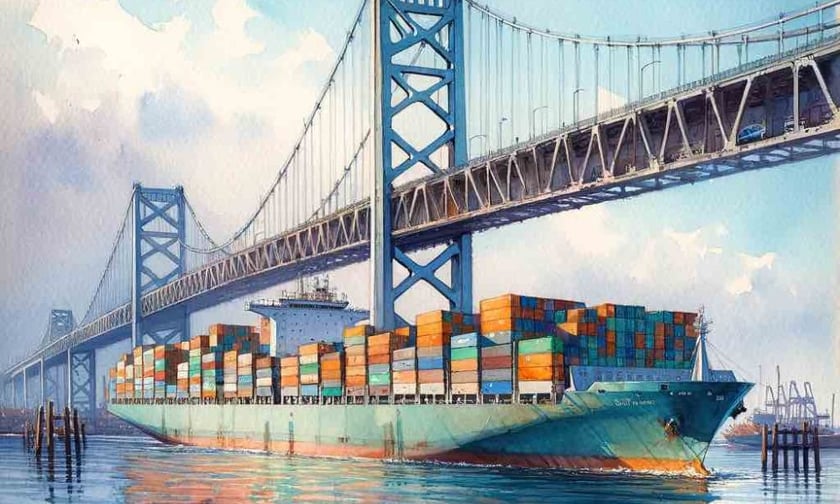

While it is already a given that the collapse of the Francis Scott Key Bridge near Baltimore, MD is a major loss event, analysts project the insured losses could ascend to unprecedented levels in the marine insurance market, potentially reaching between $1.5 billion and $3 billion.
While investment bank TD Cowen has maintained a positive outlook for the insurance sector, anticipated losses are expected to be predominantly absorbed by marine reinsurers.
The incident, involving a container ship collision with the bridge, led to fatalities and the bridge’s destruction, forcing the Port of Baltimore, one of the top 20 largest US ports, to suspend vessel traffic indefinitely. This accident is poised to become the largest insured loss in the marine market, surpassing the $1.5 billion loss from the Costa Concordia disaster in 2012.
While the bridge’s value is estimated at $1.2 billion, the full extent of the insured limit remains unknown. Anticipated insured losses include a wide range of claims, such as property damage, business interruption from the port closure, debris removal, and wrongful death, each potentially resulting in hundreds of millions of dollars in claims.
Initially, it is expected that the majority of claims will be directed towards the marine insurance market, particularly Protection & Indemnity (P&I) insurance, which covers third-party property damage and liability, as well as hull insurance for physical damage to the vessel, and cargo insurance. However, the resolution of these claims could involve extensive legal proceedings.
The International Group of P&I Clubs, which provided the ship’s coverage, is a mutual insurance organization that has reinsured the bulk of the risk, exceeding approximately $100 million per vessel, with a total limit of $3.1 billion. Approximately 80 reinsurers, including more than 20 of the top 25 global insurers, are involved in the reinsurance pool.
This event is likely to catalyze a significant increase in marine reinsurance pricing due to the scale of the losses. Despite being in the early stage of assessments given the complexity of potential subrogation, the estimated losses could range from $1.5 to $3 billion across various coverage types.
Detailed assessments of potential insured losses categorize them by likely ultimate payor post-subrogation and include damages to the bridge, the containership, and related liability claims.
TD Cowen also speculates on the broader impact on specific insurance companies, suggesting that while some may see moderate to significant losses, the overall effect on the industry could be manageable.
TD Cowen highlighted companies like Arch Capital Group, Everest Group, Renaissance Re, and Chubb, as each having varying degrees of exposure to the event.
What are your thoughts on this story? Please feel free to share your comments below.
